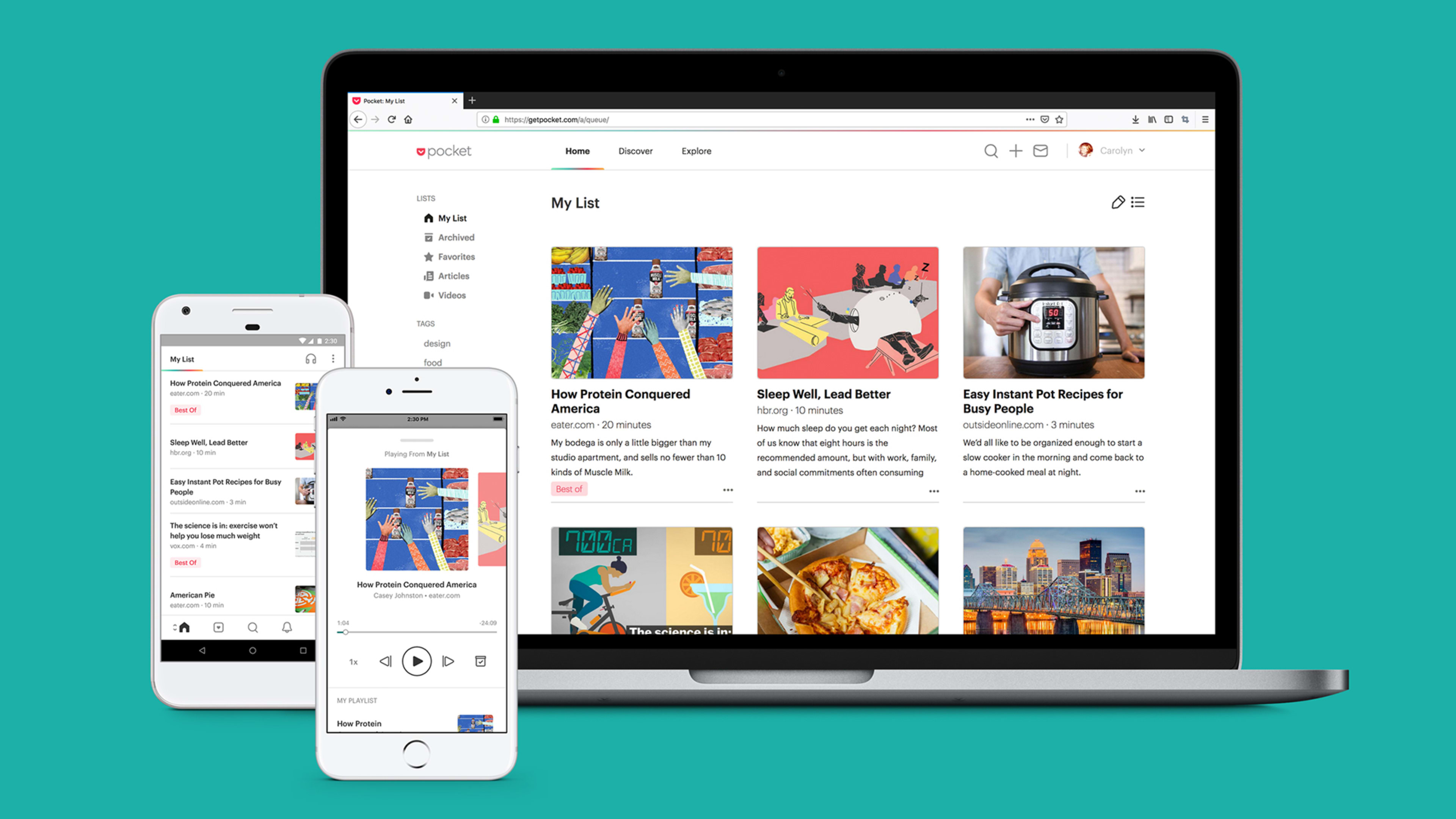When I first started using Pocket, I felt like a kid in a candy shop. I saved anything and everything, until a few weeks down the line, when I had an overflowing reading list with no apparent plan for tackling it. Saving content was the easy part. Consuming it? Not so much.
I decided to make a concerted effort to become a better reader—not just a save-for-later-and-call-it-a-day reader. Here’s how I did it.
The case for using Pocket to become a better reader
Using a read it later app sets you up for success in your reading process.
-
It keeps you focused. Instead of letting articles distract you from the task at hand, you can save them for later and power through whatever you’re working on at the moment.
-
It creates a read-me-now library. Dive straight into reading mode without having to waste time finding content.
-
It offers a distraction-free reading experience. Pocket and other apps like it support focused reading—no ads, no videos, nothing. On Pocket, you can choose your preferred reading mode (dark, light, or sepia) and tweak the font size to match your preferences. In the premium version, you can even change the font itself.
But just because you’re set up for success, it doesn’t mean you’ll succeed. Here’s how I managed to get some actual reading done with Pocket.
1. Save content mindfully
Pocket’s Chrome extension makes it easy to save pieces with just one click. But if you’re anything like me, you’ll likely abuse this feature—saving every article you think is even remotely interesting.
The more you save mindlessly, the less actual reading you’ll get done. That’s why I try to think before I save. Here’s what I look for in an article before adding it to Pocket:
-
The value. Does the headline promise to solve a problem you’re currently struggling with? Will you be better off having read the article?
-
The first few lines. How well do they engage you? If they don’t, the rest of the piece likely won’t either.
You might also create a “things to Pocket” list. Every week or month, create a list of your top learning priorities. Then, as you surf the web or scroll through social media, only save content that falls into a category on that list.
If you don’t trust your own willpower, you can automate the process. Connect Pocket to Zapier, and you can automatically add things to Pocket from wherever you find interesting content, filtering it so it only saves content that meets certain requirements. Learn more about how to automate Pocket.
2. Block time for reading
The best way to get some reading done is by blocking time for it. But for time blocking to be effective, you need to protect your time blocks. I do everything I can to be sure that I’m always reading on Saturday mornings—no matter how long my to-do list for the day is.
If you really can’t block out time, or you prefer reading through the weekdays in whatever free slices of time you have, add a Pocket shortcut to your browser. That makes it more easily accessible, and if it’s in sight, you’re likely going to visit it more.
3. Use the audio feature
My Saturday reading ritual eventually took a hit. I blocked off time for reading, but life got in the way and I wanted to prioritize other things. That hit turned out to be a blessing in disguise as I ended up discovering Pocket’s listen feature, which is available on its mobile app. The voices aren’t too bad, and you can even change the reading speed.
This let me use temptation bundling and habit stacking to get my reading done: I take daily walks, which I love, so I started listening to articles while walking. It helped me build the habit of “reading” on top of something I already enjoy doing.
4. Train yourself to pick articles you love
If you skim and archive without thinking for every article you read, you’re not going to figure out what’s worth reading—and it’ll continue to feel like a chore.
As you read each piece, decide whether it’s a keeper. If it is, add a tag to remind yourself why. I use #wowcontenttofollow for content that I want to revisit and #freelancing for tips to apply to my freelance work. Every so often, I go back through to see if there are patterns in the content I tag so I can start focusing on more content like that.
I also like to highlight important takeaways as I read. This leaves me with a record of my most important learnings (easily accessible from the Highlights tab) and helps me better understand what kinds of articles are valuable for me. (One thing to note here: The free Pocket app allows only three highlights per piece; the premium version gives you unlimited highlights.)
If a piece doesn’t teach you anything new, that’s when you can archive or delete it to keep your Pocket app organized.
This article originally appeared on Zapier’s blog and is reprinted with permission.
Recognize your brand's excellence by applying to this year's Brands That Matters Awards before the early-rate deadline, May 3.
